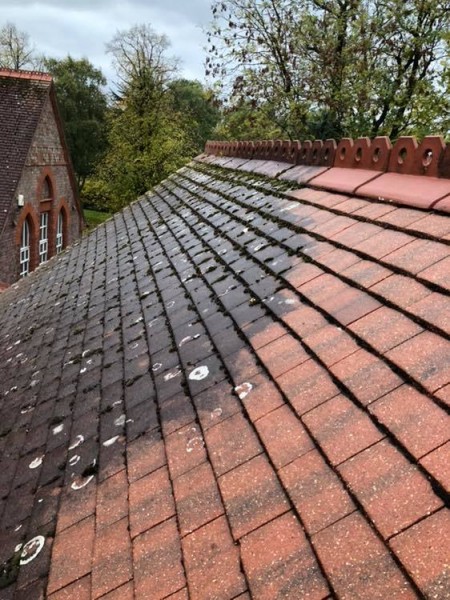Roof inspections are essential for identifying potential issues and ensuring the longevity of your roof. Click for more info may help detect issues early, stopping expensive repairs or replacements down the line. Here are some common methods and steps for conducting a roof inspection:
Visual Inspection:
a. Exterior Inspection:

Start by inspecting the roof from the ground utilizing binoculars or by safely climbing onto a ladder to get a closer look.
Look for seen indicators of damage, corresponding to lacking or damaged shingles, curling or buckling shingles, or loose or deteriorated flashing round roof penetrations.
Check for particles, moss, algae, or lichen growth on the roof, which might indicate moisture-related issues.
Inspect the gutters and downspouts for granules from shingles, as extreme granule loss can signal shingle wear.
b. Interior Inspection:
Go into the attic or crawl space and inspect the underside of the roof deck for signs of leaks, moisture, or water stains.
Look for daylight coming by way of cracks or holes within the roof deck, which may indicate roof harm.
Check for indicators of insulation harm, mold, or mildew growth, which may result from roof leaks.
Roof Walk:
a. If it is safe to do so, walk on the roof surface to examine it up shut.
b. Be cautious and put on appropriate safety gear, such as non-slip shoes and a security harness if needed.
c. Look for any delicate or spongy areas, which may point out underlying damage.
d. Check for loose or damaged roofing supplies, in addition to indicators of wear and tear.
Moisture Detection:
a. Use a moisture meter to detect hidden moisture within the roof structure and insulation.
b. Moisture detection might help identify leaks or areas of potential water intrusion that will not be seen.
Drone Inspection:
a. Drones geared up with cameras can present a complete view of the roof surface with out the need for direct bodily access.
b. A drone inspection may be particularly helpful for bigger or hard-to-reach roofs.
Professional Inspection:
a. Consider hiring knowledgeable roofing contractor or inspector to conduct an intensive inspection.
b. Professionals have the experience, tools, and experience to identify issues that will not be obvious to a home-owner.
Documentation:
a. Document your findings with photographs and notes to create a document of the roof's condition.
b. This documentation could be helpful for monitoring changes over time and for insurance coverage claims or repairs.
It's essential to perform roof inspections regularly, ideally no less than every year, and after severe climate occasions like storms. Additionally, if you're not comfortable or assured in your capacity to perform a roof inspection safely, it is advisable to rent a professional roofing skilled to ensure an intensive and correct evaluation of your roof's condition..
